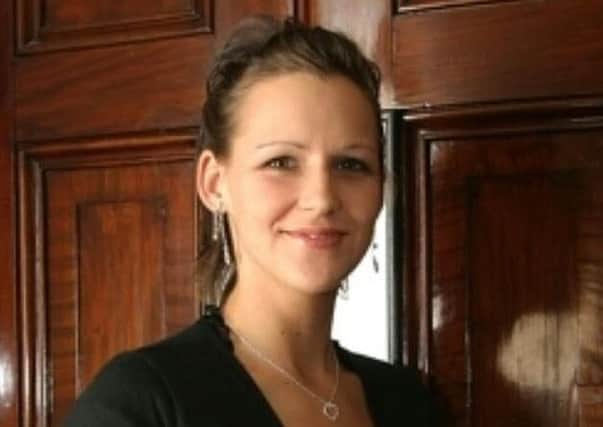Mum's heartbreak after daughter's death from infection after giving birth


Rebecca Musson was just 26 when she developed sepsis while in Blackpool Victoria Hospital seven years ago.
Lynn Musson-Battersby has told her heartbreaking story for the first time in the hope of raising awareness of the killer illness, which is deadlier than cancer, as part of Sepsis Awareness Month.
Advertisement
Hide AdAdvertisement
Hide AdThe 57-year-old, from Rydal Avenue in central Blackpool, said: “It tore the family apart in the beginning.


“We had a new-born baby in one room and she was lying dead in the next.”
Rebecca had just given birth to her daughter Lucy, now seven, at around 7am on June 19, 2009, when she began to feel dizzy and sick.
Doctors rushed her to theatre thinking she had suffered a bleed. By the time it became apparent it was sepsis, it was too late, Lynn said.
Advertisement
Hide AdAdvertisement
Hide AdLynn, who was living in Macclesfield at the time, said she got to the Whinney Heys Road hospital just as her daughter went for her op.


“She didn’t come out alive,” she said. “I was sat outside the theatre and I just heard them say, ‘we have an arrest’. Just those words.”
And the heartbreak didn’t end there. Somehow, the news had to be broken to Rebecca’s son Luke, now 15.
Lynn added: “He was at school and excited to meet his little sister.
“Then he got to the hospital and we had to tell him.”
Advertisement
Hide AdAdvertisement
Hide AdLynn has called on Gazette readers to learn the signs of sepsis in the hopes of avoiding further tragedies in the future.
She said: “I just want people to be aware. If you have got any of the signs, tell the doctor or the nurses to check it out.
“Insist they check it out because the earlier they can find it, the bigger chance you have of survival.
“A lot of people have never heard of sepsis, but it’s a huge killer. Once it hits, if it’s not dealth with, it can kill you.”
Advertisement
Hide AdAdvertisement
Hide AdSepsis – or blood poisoning – is a toxic response to an infection.
Lynn said Rebecca had an undiagnosed group A streptococcal infection.
It has no single symptom, but people should be aware of a combination of symptoms, including shivering, fever, or feeling cold, extreme pain or discomfort, pale or discoloured skin, drowsiness, and a shortness of breath.
Every year in the UK there are 150,000 cases of Sepsis, resulting in 44,000 deaths – more than bowel, breast and prostate cancer combined.
Advertisement
Hide AdAdvertisement
Hide AdProf Mark O’Donnell, medical director at Blackpool Teaching Hospitals NHS Foundation Trust, said: “The trust has undertaken a number of quality and safety initiatives over the past few years to make sure it provides the best possible care to patients.
“Severe sepsis following infection has a poor outlook and carries a high risk of death despite best treatment.
“There are recommendations and guidelines to assist with the management of sepsis and the trust has introduced treatment pathways based upon the best available medical evidence to assist with early diagnosis and management of sepsis.
“Since introducing the pathway our sepsis care indicators have significantly improved.
“However, severe sepsis is such a serious condition that, despite early recognition and initiation of optimal care, the associated morbidity and mortality remain high.”